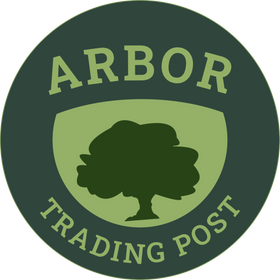Our customers who choose our handcrafted leather products express how much they appreciate the feel, look and scent of the premium leather in their hands. It becomes one of my favorite topic to discuss the beauty of all kinds of leather with like-minded people. One very common question people ask is, what is vegetable tanning leather? Some customers also ask, is it the same as vegan leather?
To answer these questions, we will need to understand the art of tanning. Raw hides are organic material, which must be treated to prevent them from decomposing and preserve their shape and durability. Tanning is such a process that transforms animal hides into durable, versatile, and beautiful leather. Generations of tanning experts have developed various methods of leather tanning, each with its unique characteristics and uses.
1. Vegetable Tanning: The Time-Honored Classic
Vegetable tanning uses natural tannins found in tree barks, leaves, and fruits. It often takes several weeks, even months, to complete. The result is a leather rich in character, known for its earthy tones and ability to develop a patina over time. Using vegetable tanned leather is like watching a leather piece tell its own story, growing more beautiful with age.
Characteristics:
- Rich, natural colors that deepen over time.
- Sturdy and firm, yet can soften with use.
- Eco-friendly, utilizing natural and renewable resources.
Usage:
- Ideal for saddlery, belts, and high-quality leather goods.
- Perfect for items that value patina and character.
2. Chrome Tanning: The Modern Innovation
Chrome tanning, introduced in the 19th century, brought a revolution to the field of leather crafting. Using chromium salts, this process can be completed in a day, offering a more efficient alternative to vegetable tanning. Chrome-tanned leather is softer and more pliable, often found in a diverse color palette.
Characteristics:
- Soft, supple texture with a uniform appearance.
- Resistant to water and heat.
- More consistent in color and thickness.
Usage:
- Common in fashion accessories, jackets, and upholstery.
- Great for items requiring flexibility and durability.
3. Aldehyde Tanning: The Gentle Touch
Aldehyde tanning, a lesser-known yet significant method, uses glutaraldehyde or oxazolidine compounds. It produces a softer and more subtle enhancement. This method produces extremely soft, light-colored leather, often used for baby shoes and chamois. The leather does not stretch much under fluctuating temperatures, which makes it a very popular choice for car upholstery.
Characteristics:
- Extremely soft, with a light cream or white color.
- Washable and can be heat-resistant.
- Less impactful on the environment compared to chrome tanning, although the toxicity of the chemicals used in this processing has raised concerns in recent years.
Usage:
- Perfect for delicate items like baby shoes and washable leathers.
- Ideal for applications requiring a gentle, subtle touch.
4. Brain Tanning: The Ancestral Method
Brain tanning is a method used by indigenous peoples for centuries. This labor-intensive process uses animal brains or other natural fats, resulting in a leather that is soft, flexible, and has a unique, smoky scent.
Characteristics:
- Soft, supple texture with a distinctive smell.
- Environmentally friendly and sustainable.
- Water-resistant and durable.
Usage:
- Traditional garments and footwear.
- Ideal for culturally significant items and reenactments.
5. Synthetic "Leather"
Vegan leather is one type of "faux leather" that has gained popularity among consumers who would like to avoid animal products. Not to be confused with vegetable tanned leather, vegan leather is not real leather. Instead it is synthetic material that is most often made of polyvinyl chloride (PVC) or polyurethane due to the wide availability and low cost of these materials. This type of vegan leather sells at a low price point, although it does not last as long as real leather and are not biodegradable.
However, the field of vegan leather is ever evolving. New types of vegan leather have been developed from natural fibers coming from plant-based materials, such as mushrooms, fruit peels and tree leaves. Although very promising, at current stages, these types of plant-based vegan leather are still rare and very expensive.
In summary, each tanning method has its own purpose and beauty. From the earthy allure of vegetable-tanned leathers to the sleek sophistication of chrome-tanned skins, the world of leather tanning is as diverse as it is fascinating.
Remember, the choice of tanning not only affects the look and feel of the leather, but also its journey with you. As you continue to explore the enchanting world of leather crafting, consider how these tanning methods might influence your next purchase and the years to come.



